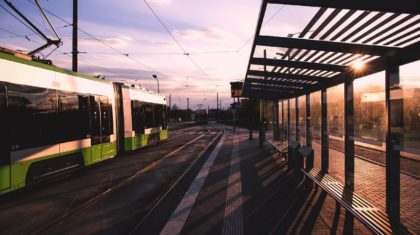
Improving our communities for active transportation requires change. This change must occur at a political level, continue to be supported at the staff level, and be accepted by the public in order to achieve success. This change is frightening for many as it represents extra effort, unknown consequences, and fears of liability, and it requires courage to take the critical step out of the box of the conventional car-centric planning that ails most cities and towns across the US. The process of addressing public concerns and obtaining public feedback can also be tedious, especially when there is community backlash.

Communities across the nation all exist somewhere within the process of changing how we think about transportation, prioritizing different modes, and designing for safety and mobility for all users — Some are farther along on the path while others are just beginning.

Good planning and policies are all crucial foundations to improve our streets and public places; however, when agency staff support designs that change the traditional methods and practices, they can be met with resistance and skepticism at a variety of levels that can slow or jeopardize the pace and effectiveness of new projects. When it comes to Complete Streets and Active Transportation, utilize engineering judgement and design flexibility.

Some agencies can take a policy and/or plan and run with it, implementing incredible projects to improve the safety and quality of life in their communities. On the opposite end, other agencies have had Complete Street policies and well-written plans for over a decade yet have no projects or very few projects to show for it; their policies and plans had very little influence on their practices and projects.
In many cases, communities can fall into planning fatigue, stemming from “over planning and under delivering,” and plans tend to “collect dust” on a shelf, never to be seen again. After some time, this can be detrimental to community engagement and support for future planning efforts.
The truth about an agency’s aspirations isn’t found solely in its vision. It is found in its budget, practices, and projects delivered.


Alta has been a trusted advisor for planning and designing healthy, active communities and a facilitator of change for more than 20 years. We are at the forefront of active transportation planning and design. Alta has made significant investments in engineering over the past several years to be able to offer greater breadth and depth to our overall design capabilities.
We now have engineers licensed in 36 states, joining our already impressive group of landscape architects, designers, and other bicycle and pedestrian design experts. We invite you to visit our design and engineering page to learn more about our services and the types of projects we have recently completed.


Combining all of our disciplines together in our ‘design studio’ environment, we can produce superior projects that not only succeed by getting the overall engineering design right, but also the details. These details are what make a project great and can provide a street or greenway with a sense of place, make it enjoyable to use, and leverage the maximum value of scarce project dollars.

Complementing our design services are Alta’s technical trainings. Our multi-day, full-day or half-day trainings have been building local capacity to achieve better projects in North America for the past several years. Alta has NACTO Certified Trainers, National Complete Streets Trainers, and other bicycle and pedestrian facility design experts on staff that can lead a variety of training types anywhere in the US or Canada.

Benefits that our clients gain with training programs include:
- Opportunity to see support for Complete Streets principles at the city, county, region, or state level
- Improved understanding of purpose, operations, and context of a variety of bicycle, pedestrian and/or transit treatments
- Interactive forum for asking questions in a group setting
- Understanding of how new treatments complement and comply with existing Federal guidance, the MUTCD, and AASHTO publications
- Interactive design activities to immediately apply what participants have learned


We customize our training programs for each community and fill them with examples of real projects in peer communities. Our staff are knowledgeable about the latest research and developments at the national level to accurately convey the current state of the practice, the performance, and the level of acceptance for new designs.
So, what is possible in your community? If you can imagine it, Alta can design it.


